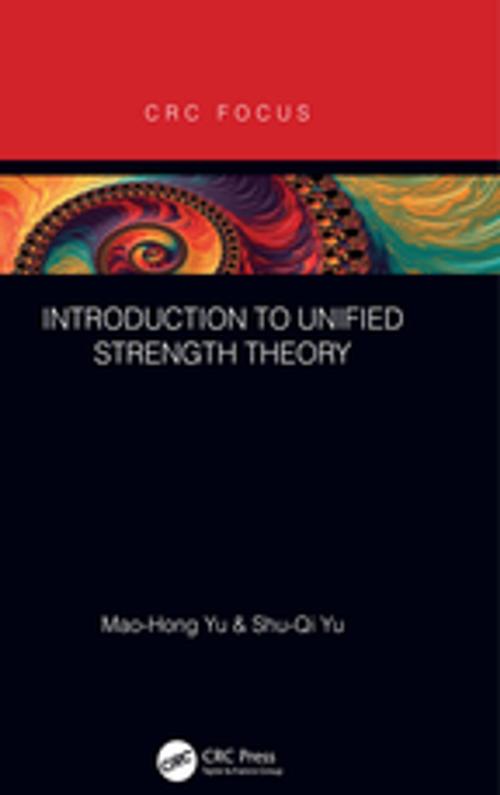Introduction to Unified Strength Theory
Nonfiction, Science & Nature, Technology, Engineering, Mechanical, Civil| Author: | Mao-Hong Yu, Shu-Qi Yu | ISBN: | 9781000022933 |
| Publisher: | CRC Press | Publication: | May 15, 2019 |
| Imprint: | CRC Press | Language: | English |
| Author: | Mao-Hong Yu, Shu-Qi Yu |
| ISBN: | 9781000022933 |
| Publisher: | CRC Press |
| Publication: | May 15, 2019 |
| Imprint: | CRC Press |
| Language: | English |
Strength theory deals with the yield or failure of materials under complex stress state. It is very important in mechanics of materials, strength of structures, and mechanical and civil engineering. Unified strength theory is a series of yield criteria and failure criteria other than a single strength theory. The unified strength theory can be adopted for various kinds of materials, such as metallic materials, geomaterials, polymers etc. It is the solution to the Voigt-Timoshenko Conundrum. Its limit surfaces cover all regions of the convex strength theory from the lower bound to the upper bound. This book gives a clear and brief description about the unified strength theory both in figures and text. Some applications of unified strength theory are also given in this book. This book is suitable for undergraduate students, who are studying the mechanics of materials and engineering mechanics, as well as for graduate students who are interested in this field. Researchers and engineers can also benefit from this book.
Strength theory deals with the yield or failure of materials under complex stress state. It is very important in mechanics of materials, strength of structures, and mechanical and civil engineering. Unified strength theory is a series of yield criteria and failure criteria other than a single strength theory. The unified strength theory can be adopted for various kinds of materials, such as metallic materials, geomaterials, polymers etc. It is the solution to the Voigt-Timoshenko Conundrum. Its limit surfaces cover all regions of the convex strength theory from the lower bound to the upper bound. This book gives a clear and brief description about the unified strength theory both in figures and text. Some applications of unified strength theory are also given in this book. This book is suitable for undergraduate students, who are studying the mechanics of materials and engineering mechanics, as well as for graduate students who are interested in this field. Researchers and engineers can also benefit from this book.















